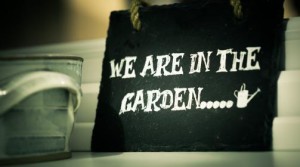Plant Markers Will Keep You From Weeding Out Your Fall Harvest
Many vegetables in your summer garden are bursting forth with nutritious, delicious goodness ready to pick. But, as we get close to Aug ust, it doesn’t have to see you gathering in the remnants of summer glory. It’s possible to make room in your summer garden for some new plantings that will yield even more produce before the first hard frost of fall. If you use plant markers, you’ll be able to keep the summer garden weeded without disturbing your new wave of garden delights.
ust, it doesn’t have to see you gathering in the remnants of summer glory. It’s possible to make room in your summer garden for some new plantings that will yield even more produce before the first hard frost of fall. If you use plant markers, you’ll be able to keep the summer garden weeded without disturbing your new wave of garden delights.
How to Decide What You’ll Plant in Mid-to-Late Summer
The real trick behind choosing what to plant for stage two in the garden, is to know when you can expect the first stiff frost in the fall. You can check the farmer’s almanac or the local nursery or gardening cooperative to get an accurate idea of the date you need to work around. Say the first time a deadly frost covers the ground in your area happens around the end of October – you’ll just need to count back from that date to calculate the proper time for planting your fall vegetable planting. It’s important that the plant has reached peak maturity before that first hard frost. There are plants which require 30 days, 60 days or 90 days for maturation so you can choose accordingly.
Safeguarding Your Fall Harvest
With proper calculation, you can plant your fall vegetables in the ground amongst your summer in-the-ground crops. However, if you worry that the ground may freeze too soon, you can gain some peace of mind by planting in raised beds. Raised beds are easier to keep warm as the air starts to chill. They also are much easier in terms of controlling the quality of soil. Plus, they are far nicer to work in than getting down on ground level when the weather is feeling a bit nippy. Be sure to use your plant markers, however, even in a raised bed.
Some Suggestions for Your Late Garden
If you are working on a 30-day schedule try: radishes, broccoli or spinach.
If you get things started with a 60-day lead then you might consider: cauliflower, cabbage, carrots, leeks or turnips. And if you get going with a 90-day plant-to-harvest window you could enjoy: parsnips, cauliflower, beets, fava beans or globe onions. Most of these later vegetables are root veggies – but what a great way to round out your nutritional intake from the ground. Still, since you’ll not have above ground clues, make good use of plant markers to distinguish what needs tending and what needs pulling.
Kincaid Plant Markers has been in the business of identifying plants for gardeners for years. We supply professional gardeners and everyday home gardeners with the plant markers that will give your garden a finished look and clear identification for multiple growing seasons. We even offer plant markers in different prices. We hope you’ll check us out and continue enjoying the benefits of gardening until after the leaves turn and fall. After all, garden delights don’t have to end with the summer.
